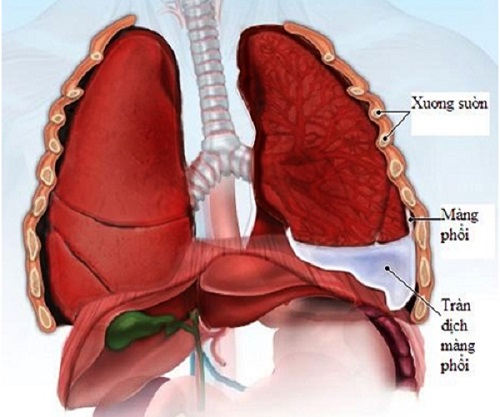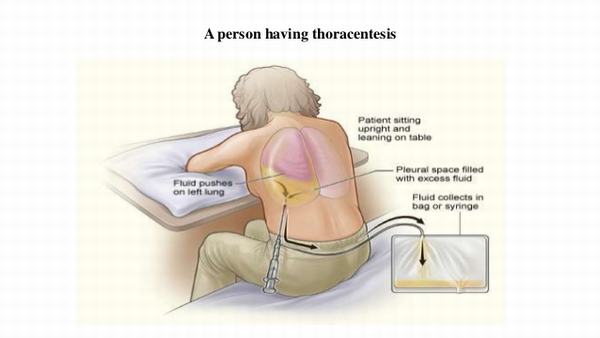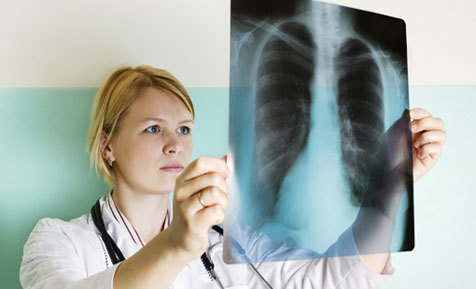Pleural effusion is not a rare disease. According to statistics, each year there are more than 1000 cases of disease of varying levels of disease. There are many cases of complicated symptoms causing death if not found and treated early.
Therefore, it is important to determine the sign of pleural effusion, which helps a doctor diagnose disease before the onset, depending on the disease condition, each patient will be treated with the regimen for pleural effusion appropriately.
Learning about Pleural Effusion

To learn more about the treatment of pleural effusion, we need to know what pleural effusion is and its causes.
The pleura is a thin membrane that coats the lungs. Each pleura can be divided into two parts: visceral pleura – covers the lungs and parietal pleura – covers the internal surface of the thoracic cavity. The pleural space contains a small amount of fluid about 20ml, which acts as a lubricant and allows the pleurae to slide effortlessly for breathing.
Pleural effusion is a condition in which excess fluid builds around the lung causing negative changes for the body, this can lead to obstructing breathing.
Pleural effusion is not a disease but called a syndrome that comes from various diseases. In which, the pleural effusion of unknown origin accounts for 10% to 20%. Pleural effusion found origin accounts for 80% to 90%.
Depending on the reason is that benign or malignant pleural effusion will cause different effects, the most dangerous case is complications leading to death.
Cause of Pleural Effusion

The most common cause of pleural effusion is usually divided into the following groups:
Transudative pleural effusion: caused by fluid leaking into the pleural space. This is from increased pressure in the blood vessels or a low blood protein count. Heart failure is the most common cause.
Exudative effusion: caused by blocked blood vessels or lymph vessels, inflammation, infection, lung injury, and tumors.
Blood color in pleural fluid: Typically lung cancer, though any cancer which has progressed to the lungs or pleura can be the cause.
Milk color in pleural fluid: When the chest is damaged or squeezed to the ducts, lymphatic caused by worms will cause pleural effusion.
Some of the most common causes of pleural effusion may include:
- Tuberculous Pleural Effusion accounts for 40% of all cases. The result of the test will detect tuberculosis (TB) bacteria in pleural fluid.
- Pleurisy causes pus in the pleural fluid. Pleural fluid culture helps detect TB bacteria to identify the causes of pleural effusions.
- Pleural effusion can be caused by cancer. Most cases of cancer are in elderly patients or in long–term exposures to pollution. The test results may indicate that the patient’s pleural fluid is often red. Although draining fluid, it is still that rapid relapse at higher risk.
- Patients have the disease such as heart, heart failure, swollen leg, and pleural effusion.
- Patients with a history of cirrhosis and pleural ascites often have a transparent color or yellowish lemon color.
- The nephrotic syndrome also causes clear pleural effusion and systemic edema.
Pleural Effusion Treatment

Treatment of pleural effusion must depend on its cause. First, doctors will perform pleural effusion procedures and other medical methods to determine the cause of the disease. Through the amount of fluid more or less and the patient’s health condition will have different treatment methods.
The principles of treatment for pleural effusion include:
- Doctors will poke fluid to reduce symptoms.
- Treatment depends on the cause of the disease.
- Combined respiratory rehabilitation for patients.
Treatment of Pleural effusion is the popular method that the procedure may be performed with the following tips:
Methods of Pneumothorax Suction
Pneumothorax suction is one of the most common methods of treatment. Thereby, which helps the patient reduce shortness of breath and detect the cause of the disease. To conduct a method of pneumothorax suction, need the following steps:

- Step 1: Patients are instructed to sit on a horse-riding chair.
- Step 2: The doctor will determine the location of the puncture: Usually located in the position of the intercostal space 8-9 the posterior axillary line.
- Step 3: Conduct disinfection of the puncture site, then anesthetized with lidocaine.
- Step 4: Start poking at the anesthetic point, the needle will be perpendicular to the chest wall, close to the shore on the rib.
- Step 5: The pleural fluid will be sucked out by a machine or 50ml syringe. The first time after suction will be taken as a sample to test pleural fluid.
- Step 6: After the suction is finished, the needle will be removed and the needle puncture position is disinfected.
If patients have a serious condition or pleural fluid with pus will have to perform another minor surgery aimed at draining the pleura with a plastic tube.
In the case of pleural effusion caused by malignancy, after draining the pleura, doctors will inject a substance that works to make fluid to prevent the pleural effusion from occurring again periodically.
Method for Symptom of Pleural Effusion
Treatments for symptom of pleural effusion include:
Symptomatic treatment of pleural effusion includes:
- Chest pain: In the case of patients with bad chest pain, should use paracetamol to reduce pain attack
- Fever treatment: If the patient has a high fever, they will be treated with paracetamol 10-15 mg/kg of body weight, combined with a warm compress to help the patient quickly reduce the fever.
Treatments for The Cause of The Pleural Effusion

If patients have pleural effusion due to infection, they should use antibiotics according to disease conditions and recommend the right dose for each stage of the disease.
If the cause is pleural tuberculosis will be treated based on anti – TB regimen. Patients need to do strictly according to the treatment regimen and the time for drug users. In addition, you should protect yourself to avoid spreading TB to other persons.
Causes of cancer: depending on the type of cancer and the stage of development of the cancer cells, applying the method such as surgery, radiation therapy, chemicals, and drugs.
Pleural effusion due to heart failure, cirrhosis, nephrotic diseases: following the treatment regimen for each disease.
Treatments for Rehabilitation of Respiratory Function
The patient will be instructed to perform exercises to restore lung function such as:
- Practice breathing.
- Practice blowing balls.
- Do chest stretching exercises.
The treatment of pleural effusion with rehabilitation methods, which requires patients to persistently exercise for a long time, avoid leaving complications and increase the ability to quickly restore lung function.
How to Prevent Pleural Effusion?
To reduce the risk of pleural effusion, we need to change our daily habits in a positive way such as:
- Regularly clean the house, ensure a safe working environment. Avoid contact with contaminated places. If you have to work in a polluted and chemical environment should apply labor protection methods.
- Always keep comfortable, think positively, avoid overwork and pressure yourself.
- Regular exercise with healthy exercises according to your condition is a great way to improve your health and reduce the risk of disease.
- Limit the use of stimulants, especially stay away from cigarette smoking.

Taking care of patients with pleural effusion should also consider the following:
- Follow-up periodically and perform respiratory rehabilitation exercises according to the instructions of your doctor.
- Limit foods high in sodium such as cheese, canned foods, cookies …
- Fully supplement the nutrients in the daily diet, especially green vegetables and protein-rich foods.
- If there is a respiratory disease, it is advisable to limit irritants such as shrimp and crab.
- Should drink enough water every day and drink fresh juices, which is very good for recovery.
- Limit hard and dry foods like bread and fast foods that contain harmful fats.
The modern treatment for pleural effusion increased recovery for patients. However, treatment efficiency also depends on the cause of disease and the patient’s coordination included early detection of disease and adherence to the treatment regimen. Besides, we should have a healthy lifestyle to prevent disease.
The site cannot and does not contain medical advice. The medical information is provided for general informational and educational purposes only and is not a substitute for professional advice. Accordingly, before taking any actions based upon such information, we encourage you to consult with the appropriate professionals.

 1900 1717
1900 1717 